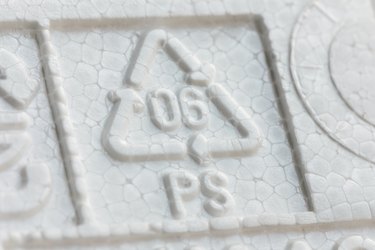
Highlights
- Styrofoam and EPS foam (a foam product similar to Styrofoam) do not break down efficiently in landfills and can harm wildlife if consumed.
- EPS foam is commonly used to make products like takeout containers and packing peanuts.
- Styrofoam and EPS foam products are recyclable in California, but the process requires special equipment and not every recycling center can accept them.
- To find out how to recycle your Styrofoam and/or EPS foam, call your local waste management company for guidance.
Many Californians have felt the dread of receiving a shipping box loaded with Styrofoam, also known as polystyrene, because they can't throw it away in a recycling bin. Although Styrofoam can be recycled, the process isn't as easy as leaving the material on the curb before garbage day. Your local government may have a special curbside program set up for picking up this material, but if it doesn't, you do have other options to recycle Styrofoam in California.
What Is Styrofoam?
Video of the Day
The trademarked product called Styrofoam was invented by the Dow Chemical Company in 1941 and was initially used for floatation. In 1954, Dow introduced a building insulation, nicknamed "Blue Board," using Styrofoam. This product is still in common use today. Real Styrofoam is a type of extruded polystyrene foam, or XPS. The foam material commonly used for items like packing peanuts, egg cartons, carryout food containers, and other food packaging is expanded polystyrene, or EPS. Real Styrofoam is not used for these purposes, so any foam containers or packaging you're likely to have at home is EPS, not XPS.
Video of the Day
Although it carries a recycling symbol, EPS is not recyclable in regular curbside recycling programs. It is made of 90 percent air and petroleum, making it lightweight and bulky. Recycling EPS is only feasible when it is ground up and compacted.
How to Recycle Styrofoam
EPS foam is classified as a number 6 plastic, which is challenging to recycle due to its low density. It must be processed by special equipment that breaks it down and compresses it into a much denser material that is roughly 1/90th of its original volume. It can then be used to make insulation sheets, construction materials, and many more everyday items.
Before starting the recycling process, check with your local government to see if it has a curbside recycling program that explicitly recycles EPS foam. Unfortunately, not all towns have these kinds of programs, so you might need to find a recycling center where you can drop off your foam recyclables.
If you live in the San Francisco Bay Area, a company called GreenCitizen has a drop-off recycling program. It also liaises with businesses to offer pickup recycling services. If you don't live in the Bay Area, GreenCitizen has an extensive database called the Green Directory that will help you find the nearest recycling center that accepts EPS foam.
The Foodservice Packaging Institute also has an extensive database that will help you locate your nearest recycling drop-off location. This database additionally shows which towns offer curbside programs.
Why You Should Recycle EPS Foam
Although you may be tempted to just throw your foam waste in a trash can, there are a couple of reasons you shouldn't. First, EPS foam is very resistant to photolysis, or decomposition due to light absorption. Since EPS is resistant to photolysis, it can take up to 500 years for this material to decompose naturally in a regular landfill.
Second, when you throw out your foam material and it ends up in a landfill, it can be hazardous to scavenging animals while also releasing harmful pollutants. Broken-up foam pieces can also end up in bodies of water, causing harm to marine animals — another reason it's vital to reach out to your local recycling centers to learn how to properly get rid of your leftover foam materials.